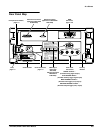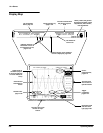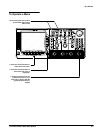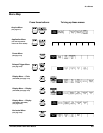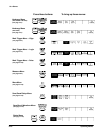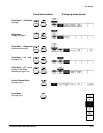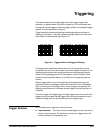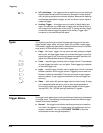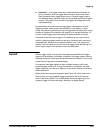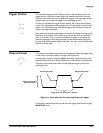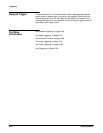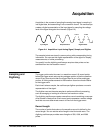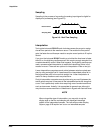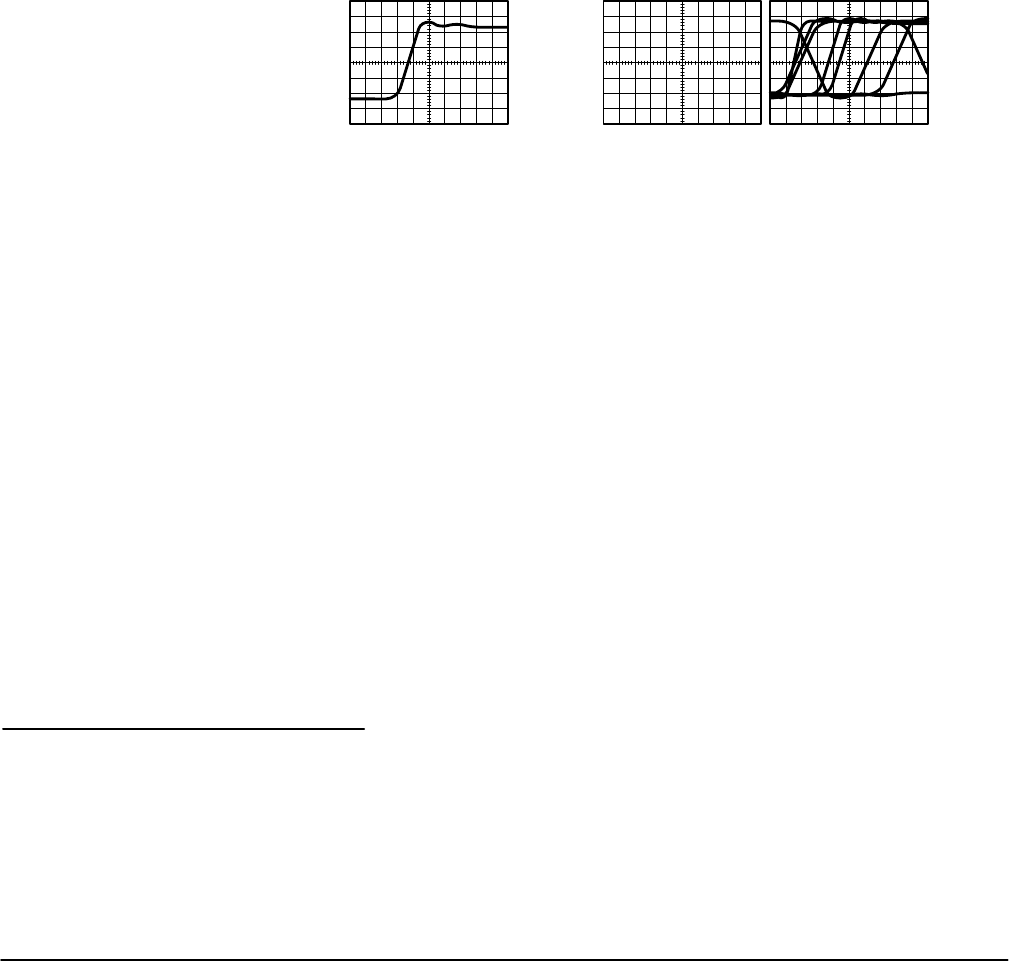
TDS 620A, 640A & 644A User Manual
2Ć13
Triggering
This section describes the edge trigger of the main trigger system and
explores, in a general sense, the topic of triggering. This oscilloscope also
has logic and pulse triggers in the main trigger system and a delayed trigger
system. They are described in Section 3.
Triggers determine when the digitizing oscilloscope starts acquiring and
displaying a waveform. They help create meaningful waveforms from unstaĆ
ble jumbles or blank screens (see Figure 2Ć1).
Triggered Waveform Untriggered Waveforms
Figure 2Ć1:ăTriggered Versus Untriggered Displays
The trigger event establishes the timeĆzero point in the waveform record,
and all points in the record are located in time with respect to that point. The
digitizing oscilloscope continuously acquires and retains enough sample
points to fill the pretrigger portion of the waveform record (that part of the
waveform that is displayed before, or to the left of, the triggering event on
screen).
When a trigger event occurs, the digitizing oscilloscope starts acquiring
samples to build the posttrigger portion of the waveform record (displayed
after, or to the right of, the trigger event). Once a trigger is recognized, the
digitizing oscilloscope will not accept another trigger until the acquisition is
complete.
The basic trigger is the edge trigger. An edge trigger event occurs when the
trigger source (the signal that the trigger circuit monitors) passes through a
specified voltage level in a specified direction (the trigger slope).
You can derive your trigger from various sources.
H Input channels Ċ the most commonly used trigger source is any one of
the four input channels. The channel you select as a trigger source will
function whether it is displayed or not.
Trigger Sources



